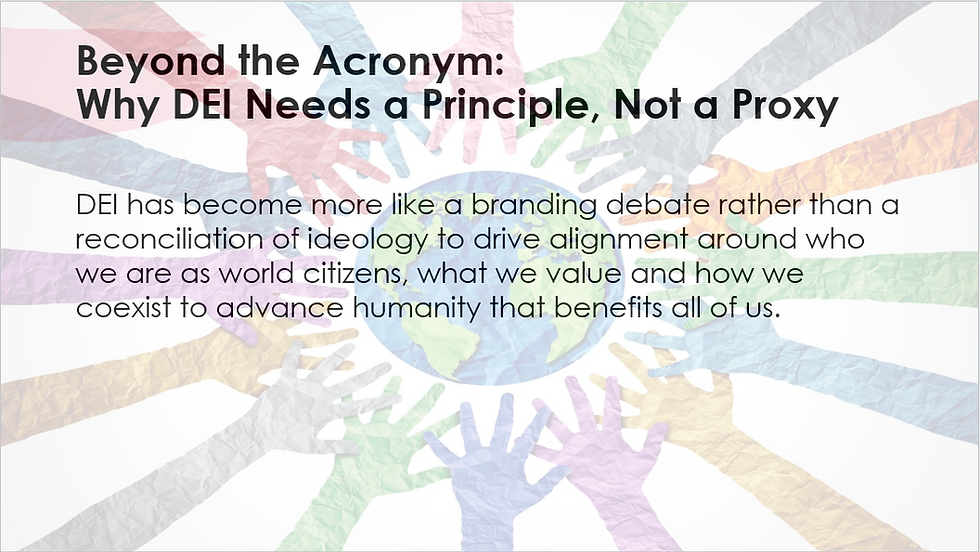Dig Deeper into the DEI Data Landscape to Optimize the DEI Business Case
- srjosephlawfirm
- Apr 6, 2023
- 3 min read
Over the past two years, I’ve undertaken multiple DEI Analytics & Reporting projects across multiple industries for organizations of varying sizes. One common finding is that the qualitative data almost always reveals that stakeholders lack clarity on the meaning of DEI. The overwhelming majority of organizations generally define DEI in the context of demographics – gender headcount is the most commonly prioritized demographic, whether targeted at increasing the number of women in leadership, in particular functional areas, or overall to achieve a 50/50 workforce mix of men and women. However, race and ethnicity are typically top of mind when social justice issues arise. Intersectionality of race and gender is less likely to be a priority. Regardless, the situational contextual of most organization's existing state of DEI is routinely limited to charts, graphs and dashboards that show numbers and percentages with various demographic data views across departments, across locations, within management, by generation, etc. Yet, the DEI data story is remiss in these mere pictorials. And my ever-present question to HR and leadership is: “Are demographics your DEI business problem?” You see, a DEI data story may start with demographics, but there's a much broader DEI data landscape to explore in order to tell a complete story.
While there’s a business benefit to reporting workforce demographics that closely reflect the market, demographics alone do not tell the full DEI data story. Nonetheless, there is value in being transparent with workforce demographics. There’s also value in being able to show that your workforce is reflective of the community in which you operate. However, the power of DEI is realized when you can tie business outcomes to demographic shifts. In other words, it’s imperative to understand the cause(s) that substantiate your DEI strategy. There needs to be additional data-driven context for the drivers behind the demographics. Headcount might merely be an effect of DEI, but not the necessarily the cause. Until and unless the DEI business case is established, demographic targets are only partially telling your organization’s DEI data story and insufficiently making the DEI business case.
Demographics effectively address diversity. But beyond the “D” in DEI, there are also equitable outcomes and inclusive practices (the “E” and the “I” elements of DEI) that must be considered to complete your DEI narrative with diversity, equity and inclusion themes and to identify business drivers. Furthermore, there’s a DEI data landscape to explore far beyond demographic data in order to create a solid DEI data story. In addition to people and other workforce data, there’s also policy data, observation data, survey data and other various other data types within the DEI data landscape. Hence, when the entirety of the DEI data landscape is analyzed, organizations can then build a DEI business case that will guide demographic shifts for purposes of people, productivity, performance and ultimately, profitability improvements.
Some examples of reliable research about successful DEI programs show that diverse management teams yield 19% higher revenues, neuro-diverse hires (specifically, autism hires) can be 140% more productive than other workers in similar roles, and inclusive companies achieve 2.3x the cash flow per employee than less inclusive companies. For these types of DEI successes, the key is understanding what business problem you’re solving for with DEI initiatives. Undeniably, demographics matter. The question is how do demographics matter for your DEI business case. Thus, when recognized as a business imperative, DEI is more than a demographic strategy. For the greatest impact, highly effective DEI programming leverages the entire DEI data ecosystem and results in a data-driven, transformational way of operating to create sustainable business outcomes.



Comments